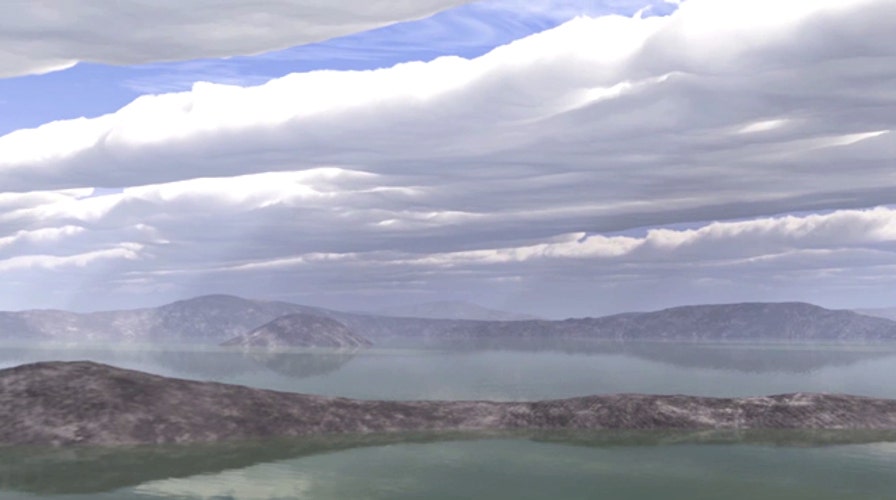NASA dreams of an ancient watery Mars
Animation shows what surface of ancient Mars may have looked like
Where did all the water go?
Billions of years ago when the Red Planet was young, it likely had a thick atmosphere that was warm enough to support oceans of liquid water, a critical ingredient for life, NASA believes. Mars today is a barren desert however -- so what happened?
NASA aims to solve a piece of that puzzle with the launch of the Mars Atmosphere and Volatile Evolution (MAVEN) mission, which is set to blast off from Cape Canaveral Air Force Station's Complex 41 on Monday, Nov. 18 at 1:28 p.m.
The newest Mars explorer will study the thinning of the planet's atmosphere and the disappearance of surface water over time to possibly explain the discrepancy between then and now.
There are currently several competing theories to explain how Mars was stripped of its thick atmosphere some 4 billion years ago, the space agency said.
"The leading theory is that Mars lost its intrinsic magnetic field that was protecting the atmosphere from direct erosion by the impact of the solar wind," said Joseph Grebowsky of NASA's Goddard Space Flight Center in Greenbelt, Md.
The solar wind is a thin stream of electrically charged particles or plasma blowing continuously from the sun into space at about a million miles per hour.
"Studies of the remnant magnetic field distributions measured by NASA's Mars Global Surveyor mission set the disappearance of the planet's convection-produced global magnetic field at about 3.7 billion years ago, leaving the Red Planet vulnerable to the solar wind," Grebowsky said.
MAVEN was designed to help study and possibly verify that theory. Ahead of its launch, NASA’s Goddard Conceptual Image Lab created a stunning video showcasing what a water-filled Mars would have looked like. After all, if liquid surface water existed billions of years ago, then the planet’s atmosphere had to have had a different climate that was warmer and a pressure near or greater than it currently is.
The video shows how the surface of Mars might have appeared during this ancient warm period, beginning with a flyover of a Martian lake. It ends with an illustration of NASA's MAVEN mission in orbit around present-day Mars.
The spacecraft will arrive at the Red Planet on Sept. 22, 2014, and slip into an elliptical orbit ranging from a low of 93 miles above the surface to a high of 3,728 miles. It also will take five "deep dips" during the course of the mission, flying as low as 77 miles in altitude and providing a cross-section of the top of the atmosphere.

